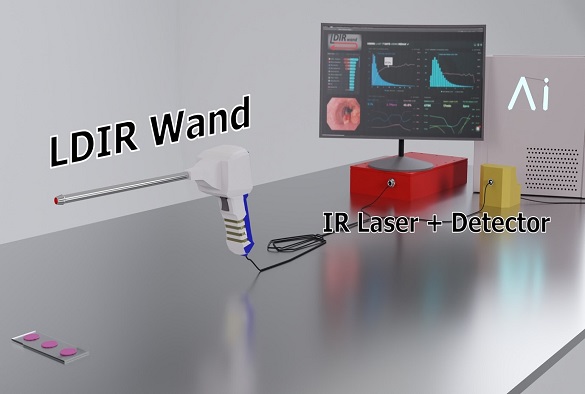
A research team from the University of Liverpool has been awarded £534k from the National Institute for Health and Care Research (NIHR) to develop an innovative new instrument to transform oral cancer diagnosis.
Researchers from the University's Department of Physics, in collaboration with the Liverpool Head & Neck Centre (LHNC), have been awarded a NIHR Invention for Innovation (i4i) grant to develop the Liverpool Diagnostic Infrared (LDIR) Wand, a hand-held device that can rapidly and accurately identify lesions in the mouth that will develop into cancer.
The LDIR wand employs a small number of infrared lasers to predict, based on machine learning algorithm analysis of infrared spectral images of tissue, lesions in the mouth that are not currently malignant but will become malignant in the future.
There are more than 12,000 cases of oral cancer in the UK every year and early diagnosis is critical to improving patient outcomes. However, identifying those lesions of the mouth (dysplasia) that will become cancerous is difficult leading to either unnecessary treatments or missed cancer diagnoses. Currently, dysplasia is diagnosed through a microscopic study of tissue samples from patients, which is time-consuming and can be unreliable due to human subjectivity.
University of Liverpool physicist, Professor Peter Weightman, who has led the development of this pioneering technology, said: "This i4i award from NIHR provides us with the opportunity to develop a prototype of the LDIR Wand that has the potential to transform oral cancer diagnosis. While this application is focussed on oral cancer our approach should be applicable to any cancer where the diagnosis is based on the analysis of biopsies."
Professor Richard Shaw from the LHNC said: "This instrument addresses a difficult clinical problem in head and neck cancer diagnosis. We know that earlier diagnosis is key to saving lives, but predicting cancer risk in oral patches is problematic. For some patients we miss a high risk of cancer developing, but for other patients we cannot safely reassure them without better information"
The LDIR Wand is the result of a decade of research funded by the Engineering and Physical Sciences Research Council (EPSRC), Cancer Research UK and EPSRC Impact Acceleration Awards. The NIHR i4i award will fund the development of a prototype of the LDIR Wand for use in histopathology laboratories. The ultimate aim of the programme is to develop a device for use in clinic for real-time diagnostics.






